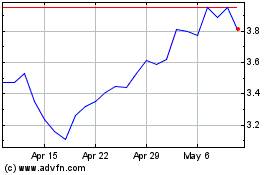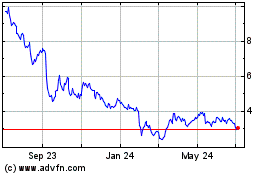Usage-based auto insurance (UBI) is a growing segment of the
automotive insurance market, the result of a technological
revolution as the Internet of Things (IoT) continues to further
influence various industries, including automotive.
In 2015, close to 12 million consumers globally subscribed to
this type of insurance, according to a new report from IHS
Automotive, part of IHS, Inc. (NYSE: IHS) and a leading source of
critical information and insight to the global automotive industry.
The number of consumer subscribers to UBI is expected to grow to
142 million globally by 2023, according to the IHS report.
This specific type of automobile insurance uses real-time
information about a driver’s actual driving ability and habits to
assess actuarial risk, capturing information from the in-vehicle
telematics system. In the decade or so since its initial launch,
UBI has inspired as much frustration as hope from its believers and
practitioners. Expectations were high from the start, but these
expectations were long thwarted by market stagnation and the
reluctance of insurers to embrace the solution.
“The current UBI landscape is in transition with robust
expansion,” said Stacey Oh, manager, automotive technology at IHS
Automotive. “New insurers are entering the market, new markets are
being opened and new solutions are being launched.”
However, providers are still identifying and developing the
strongest business models, the best value proposition and the most
suitable data capture device as those providers seek to alleviate
divergence with the auto industry. The added challenge of
constantly evolving technology -- including telematics, the
connected car and mobility itself -- are influencing factors.
Current regional leaders, markets to watch
Today, Italy is the only country in which UBI has a double digit
share of the insurance market, representing 10 percent of the
market there in 2015, according to the IHS Automotive report.
Government intervention was a strong influencer there. In 2012, in
response to fraudulent insurance claims, Italy’s Prime Minister
instituted a decree stipulating that if an insurance company
already offered a UBI product with a “black box,” it must offer the
box to the customer at no charge and offer a significant upfront
premium discount for consumers.
Italy and the United Kingdom are by far the most mature UBI
markets in Europe. Activity is growing in France, Germany and
Spain, though the solution remains very niche-like in these
markets. Insurers are unsure of what business propositions work
best and consumers are still unfamiliar with the product. Privacy
concerns, especially in Germany, make consumers wary of sharing
data.
Due to its market potential, the U.S. will lead the way in UBI
marketing and innovation in the coming year, IHS says. America is
the largest car insurance market in the world, with more than 260
million vehicles in operation in 2015. According to IHS estimates,
there were more than 5 million UBI policyholders in 2015 in the
U.S., by far the most of any other country. Italy was a distant
second, with just 3.6 million subscribers out of 36.8 million
vehicles in operation in 2015.
Another key market to watch is China. The Chinese government
began granting foreign insurance carriers access to the market in
2012, and approximately 15 insurers will launch UBI pilot programs
this year. The sheer size of the automotive market allows for the
UBI subscriber volumes to grow from 50,000 in 2015 to over 22
million by 2023, according to IHS Automotive forecasts.
Other influencing factors
The future of UBI is also explored in this report, with sections
on Millennials, pay-per-mile (Uber) and pay-per-ride insurance,
ADAS and the autonomous car. The pay-per-ride model will become
increasingly important as millennials impose their preferences on
the market. Whether or not the customer works for an Uber-type
company or simply prefers leasing a car whenever necessary, he will
want to be insured only for that trip or the distance driven. And,
with UBI, he could choose to travel at a time when the trip
insurance premium is lowest.
As UBI evolves, the technology that created it is also
evolving—and, as a result, so is society. A smartphone-only
solution will eventually dominate the global UBI market, but likely
only for a short time. The connected car is well on its way, and
the vehicle itself may well be the ultimate UBI device. By the time
connected cars are common on the world’s roads, it could also be
that, because of product innovation and the rise of alternative
mobility models such as ride sharing and car leasing, the UBI
market will not be anything like that of today.
About the Methodology:
The IHS Usage Based Insurance Report is based on more than 40
interviews from across the value chain, from insurance carriers,
data aggregators, telecommunications companies, to automotive OEMs.
More than 70 companies are mentioned throughout the report as it
offers a comprehensive review of the business models, barriers to
uptake, market drivers, case studies, pilot programs, value
propositions and device debates. The forecast section is regional
and country level, based on IHS Automotive forecasts which include
Passenger Cars (PC) as well as Light Commercial Vehicles (LCV). UBI
attach rates as the share of autos in-use with UBI-based insurance
policies, as well as UBI subscriber numbers and UBI growth rates
are provided.
About IHS Automotive
(www.ihs.com/automotive)
IHS Automotive, part of IHS Inc. (NYSE: IHS), offers clients the
most comprehensive content and deepest expertise and insight on the
automotive industry available anywhere in the world today. With the
2013 addition of Polk, IHS Automotive now provides expertise and
predictive insight across the entire automotive value chain from
product inception—across design and production—to the sales and
marketing efforts used to maximize potential in the marketplace. No
other source provides a more complete picture of the global
automotive industry. IHS is the leading source of information,
insight and analytics in critical areas that shape today’s business
landscape. IHS has been in business since 1959 and became a
publicly traded company on the New York Stock Exchange in 2005.
Headquartered in Englewood, Colorado, USA, IHS is committed to
sustainable, profitable growth and employs nearly 9,000 people in
33 countries around the world.
IHS is a registered trademark of IHS Inc. All other company and
product names may be trademarks of their respective owners. © 2016
IHS Inc. All rights reserved.
View source
version on businesswire.com: http://www.businesswire.com/news/home/20160509006084/en/
IHS Inc.Michelle Culver,
+1-248-728-7496michelle.culver@ihs.comorPress Team,
+1-303-305-8021press@ihs.com
IHS (NYSE:IHS)
Historical Stock Chart
From Mar 2024 to Apr 2024

IHS (NYSE:IHS)
Historical Stock Chart
From Apr 2023 to Apr 2024
